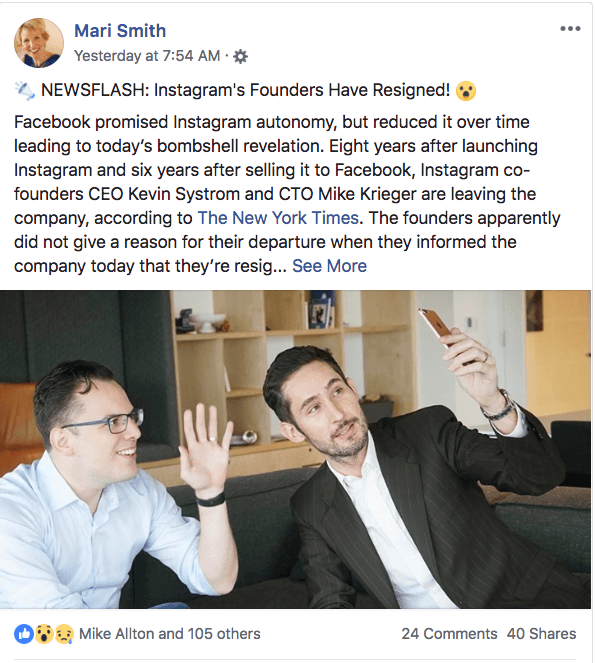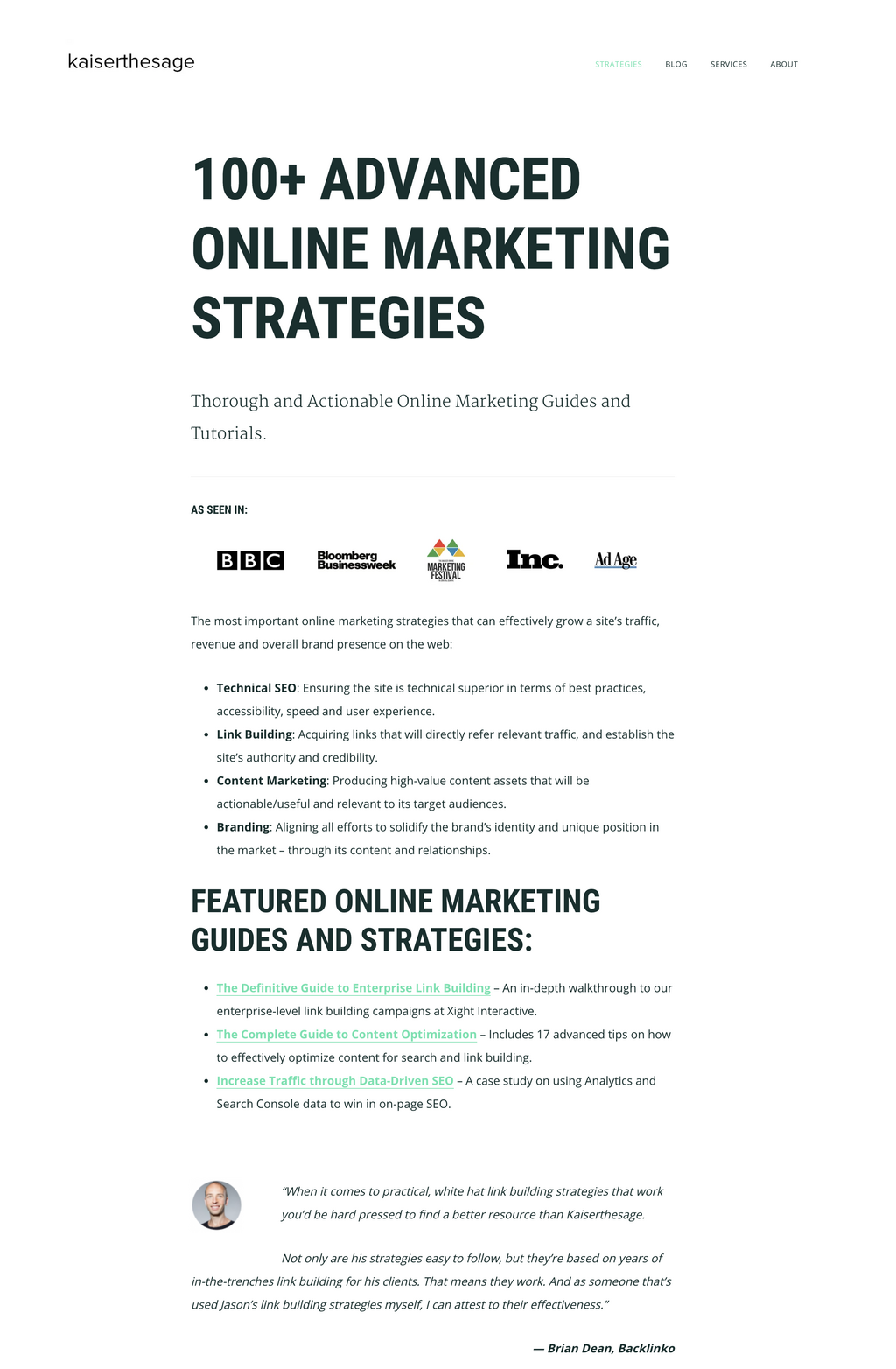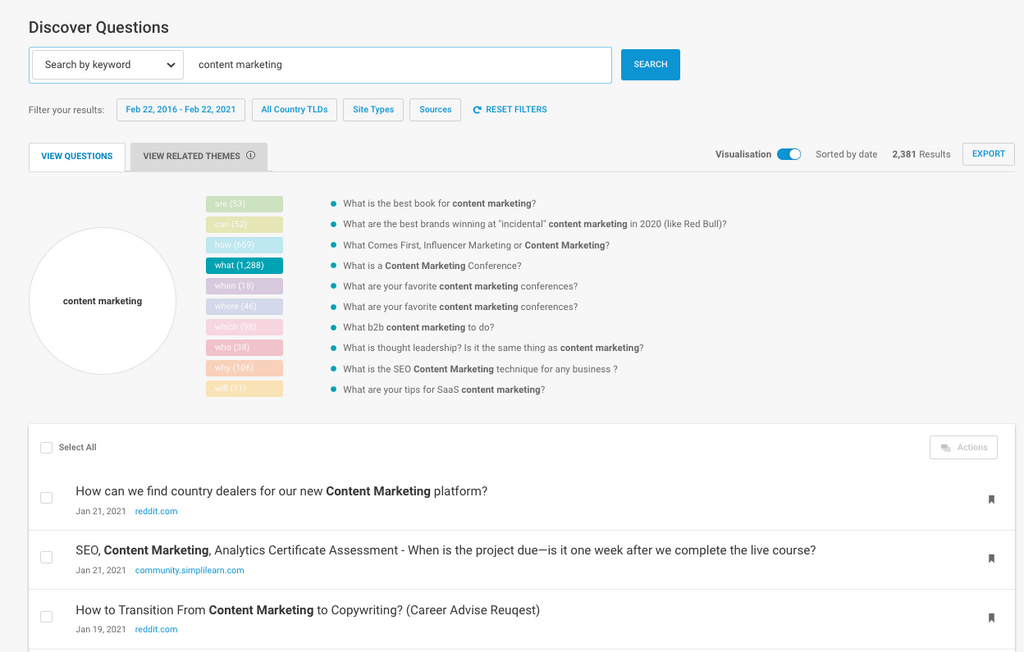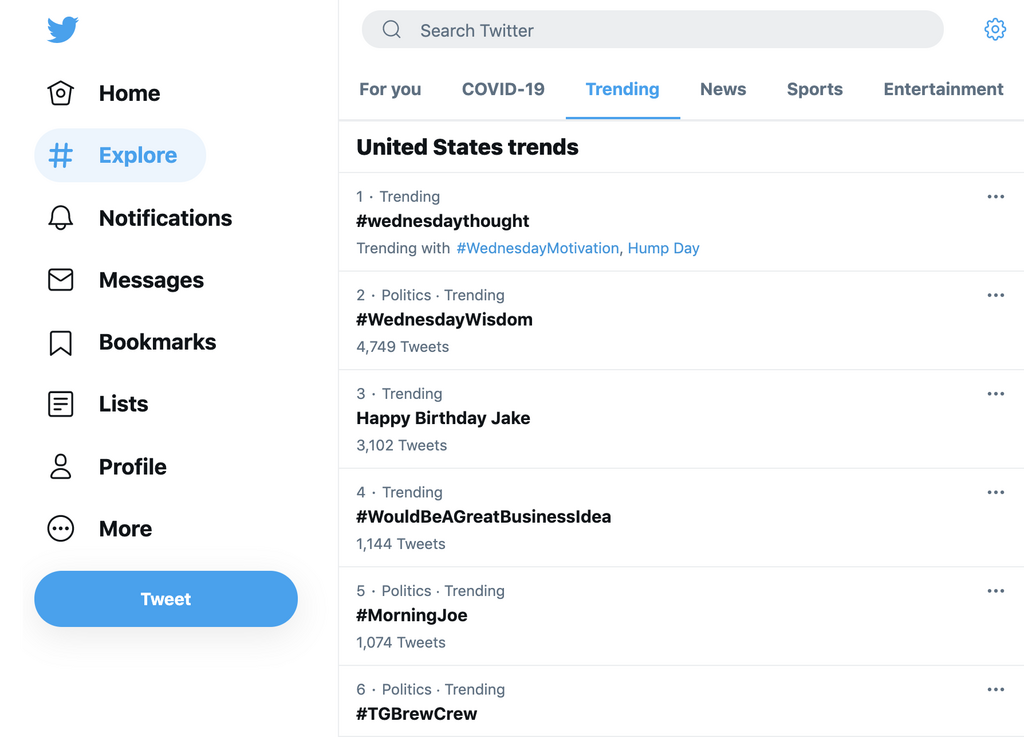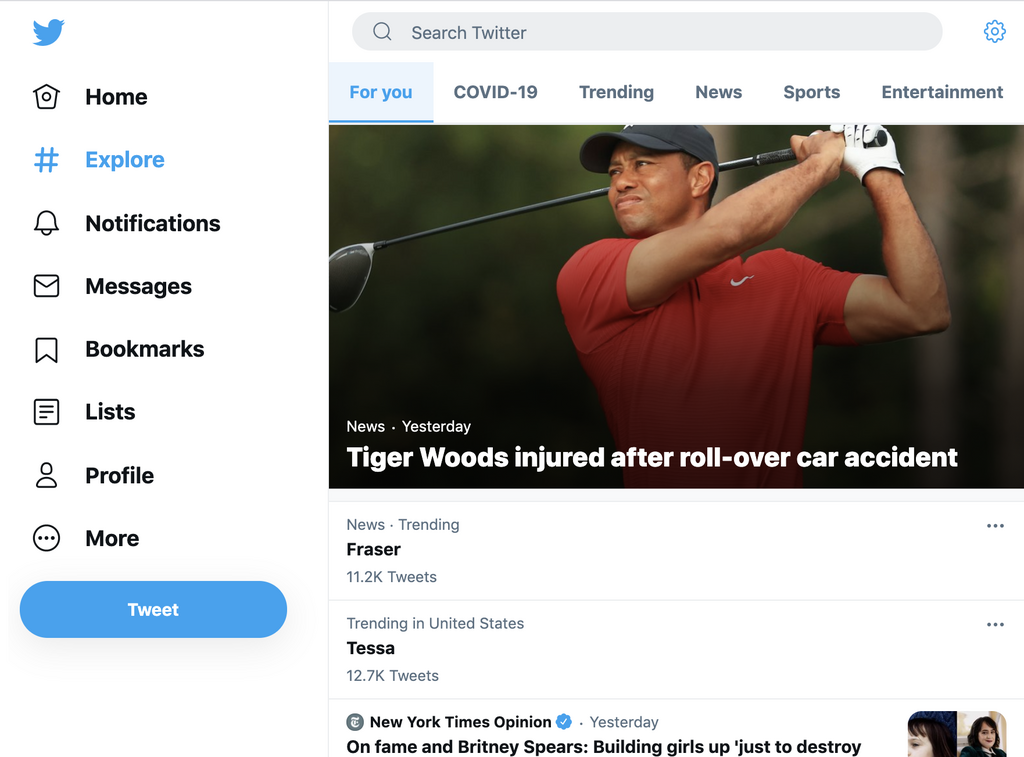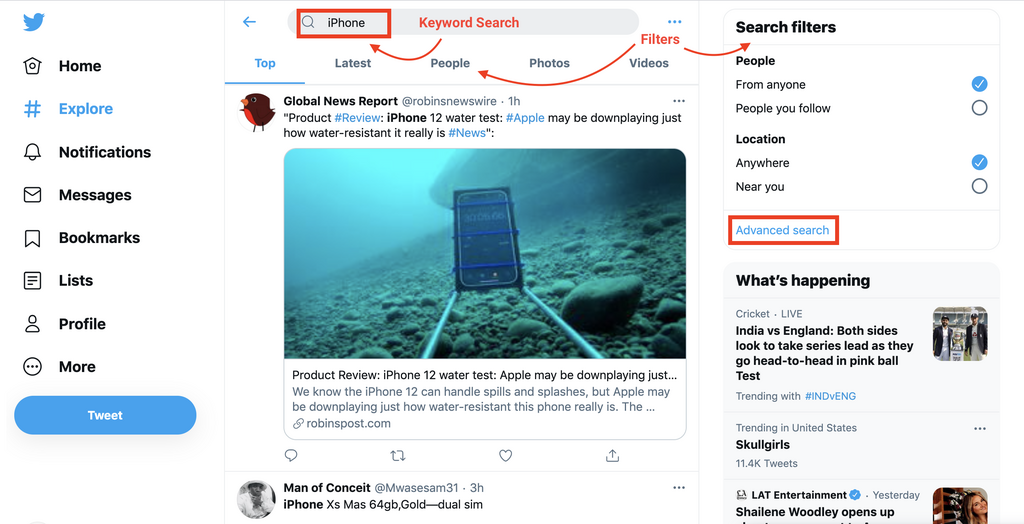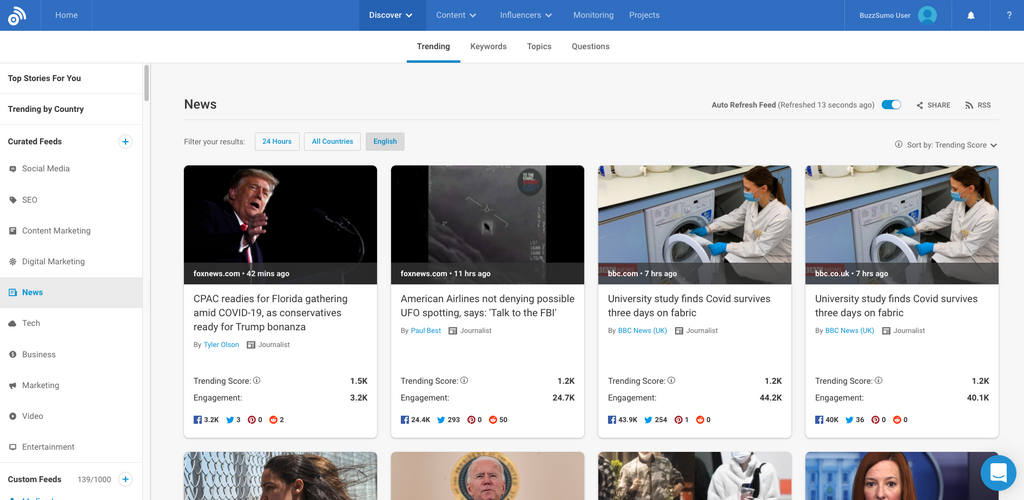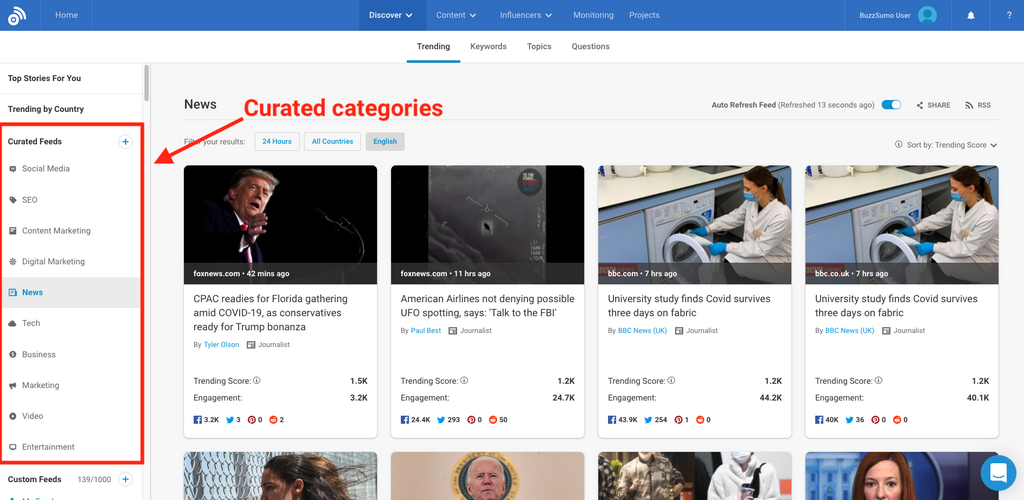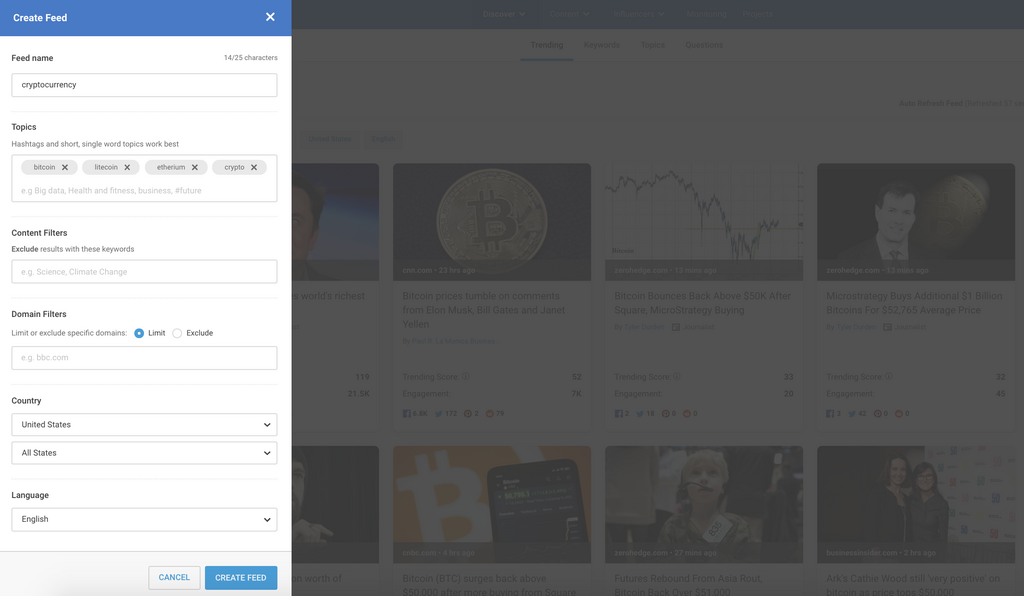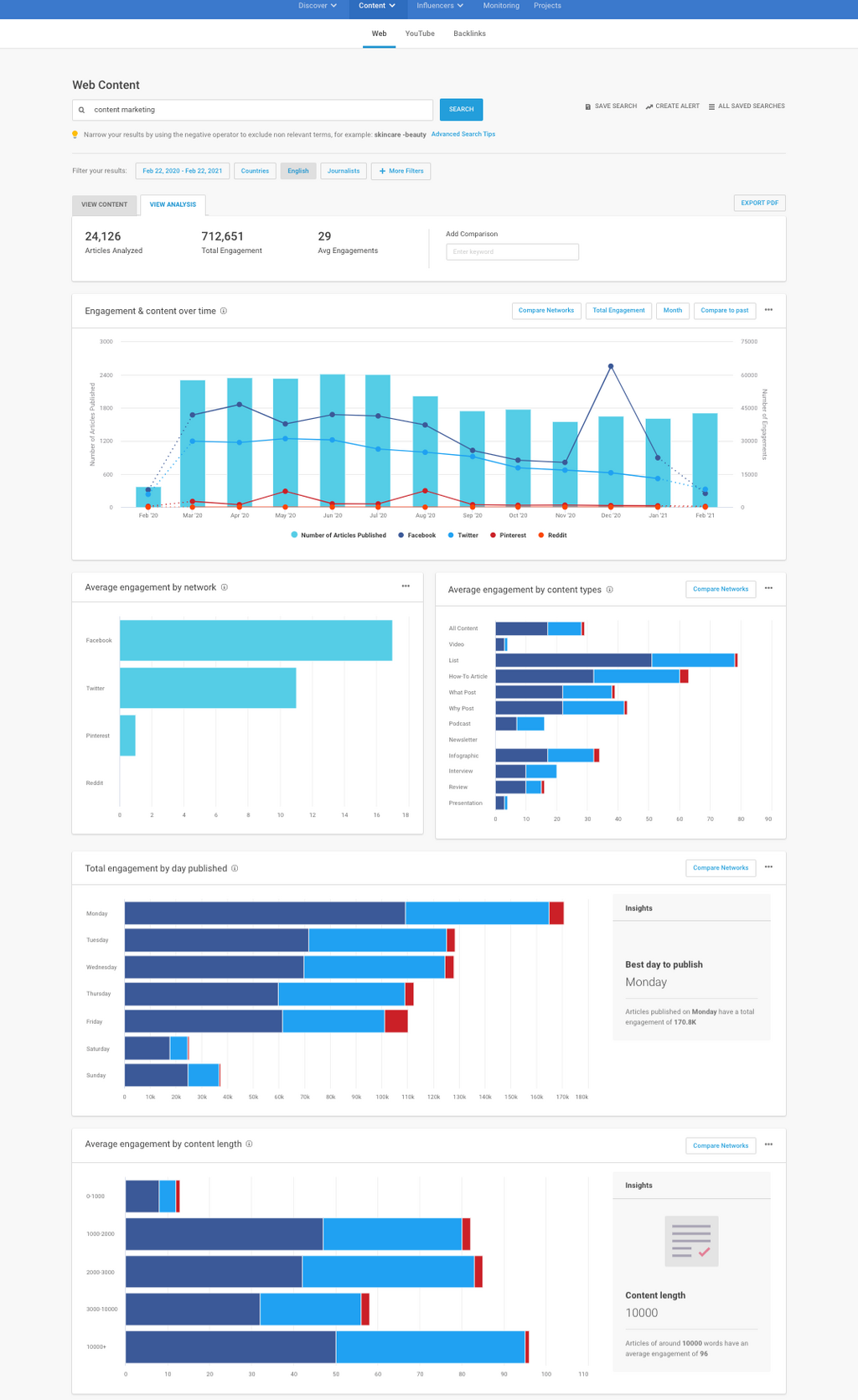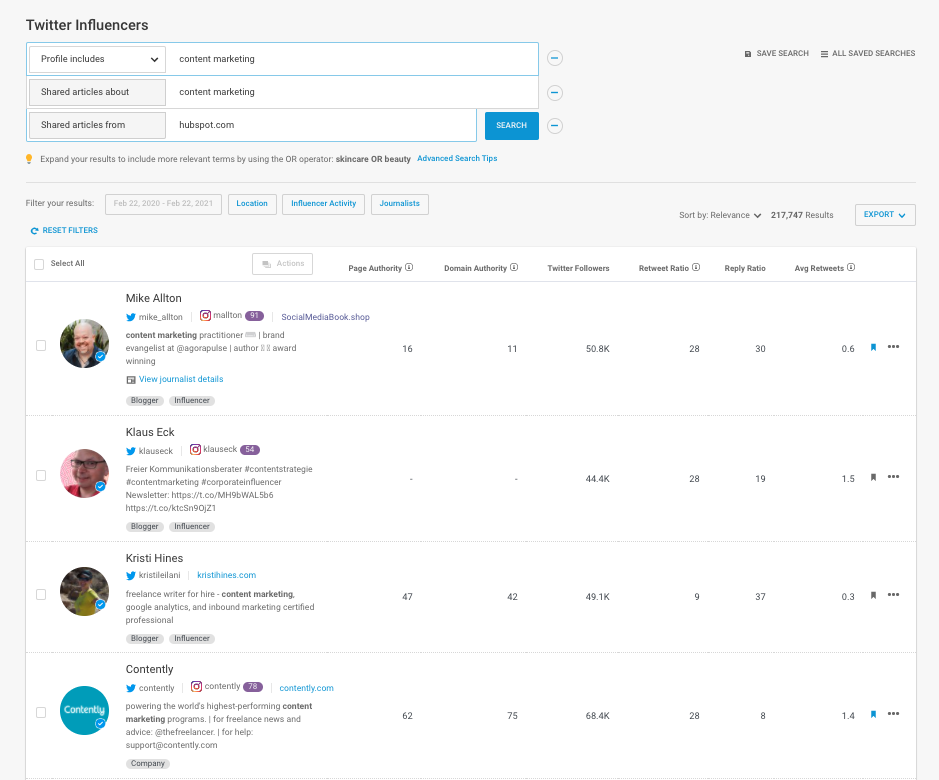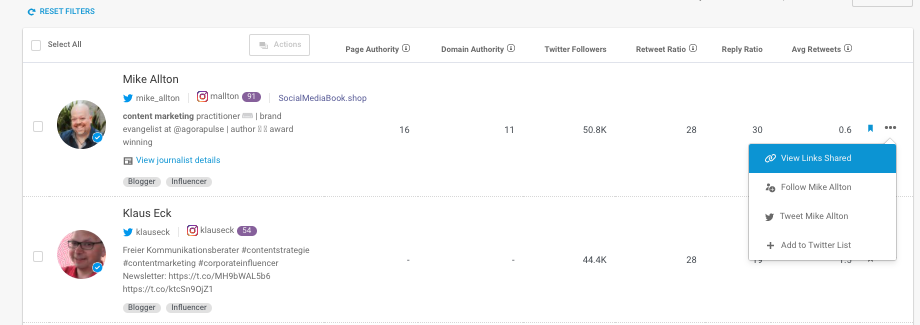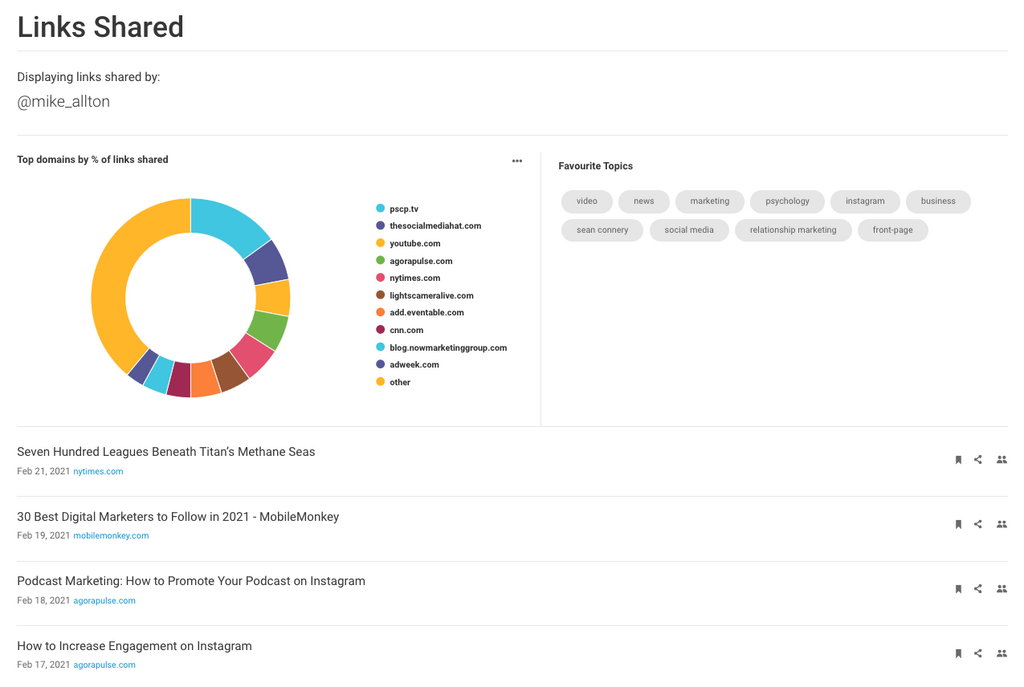Published February 24th 2021
How To Stay Top-of-Mind For Your Audience With Content Curation
It’s tough getting your business or brand to stay top-of-mind for your audience. But with strategic content curation, you can become the go-to industry source they’re looking for.
There’s one problem, though: So. Much. Content. Those three words probably sum up the internet as a whole. As days pass, more and more content gets published, good or bad.
In fact, in a recent post on the Skyscraper Technique BuzzSumo found that, compared with 2016, we have published a staggering 64% more content over the last year – and that's based on a pretty conclusive analysis of 1.7bn articles.
This is a serious blow to content marketers everywhere. They have to compete more strenuously for the market’s attention and have an advanced content ideation strategy just to keep up with their competitors.
Every piece of content your competitors create is another item to compete with. Furthermore, every piece of content that even non-competitors create is also competing for the attention of your audience.
But what if it’s actually the opposite?
What if you could use all that non-competitive content to your own advantage? What if all content could become stepping stones in creating an entirely solid piece? What if you can use other’s work legally, and still get big benefits for your own business?
My friends, we are talking about content curation, a not-so-new concept that top marketers have been utilizing for years now. Proper content curation can yield extremely big results that might surprise you.
In this article, we will be covering:
This is all in an effort to teach you how to leverage other people’s content to stay top-of-the-mind for your audience.
What does content curation mean?
To some, content curation means carefully selecting, commenting on and distributing the highest quality content created by others.
But the content curation process can also involve creating owned content that is inspired by the quality content of others.
Heidi Cohen makes an important distinction between content aggregation and content curation.
Aggregated content simply involves distributing a compilation of content (ie. a list), but when you curate content you are adding an additional layer; your own unique opinion or perspective.
Why is content curation important?
Content curation gives you the opportunity to raise your brand awareness, assert yourself as a thought leader and, most importantly, build strong connections with your audience.
In many ways, content curation is about community – especially when you’re sharing other people’s ideas.
Communities have each others’ backs. Your own content will naturally do better if you’ve got a network of people personally vouching for it. And they’ll do this for one of two reasons:
- Because of the value you add to their lives
- Because you have done the same for them
Remember ‘Like for like’ requests on Myspace or Instagram? Or link trades by way of guest posting?
Well curating content is not too dissimilar – you’re still sharing someone else's ideas and driving engagement their way – but the key difference is you’re not demanding they reciprocate.
By being sincere about your reasons for sharing someone else's content, and thinking beyond the transaction, you’ll naturally build up strong connections which will pay dividends in future.
When you’re done sharing, you can then turn your curation into conversation. Discuss what it is you found interesting about a certain piece of content, give feedback to the creator or ask them questions in a public forum. This softly-softly approach is a brilliant way to build a strong network.
Content curation can therefore lead to all kinds of positive outcomes, whether that be reciprocal links, content collaborations or ongoing engagement.
Ways to Distribute Curated Content
Before we get into the “how-tos” of content curation, let’s talk about the methods you can use to publish curated content.
The primary distribution channels, by order of difficulty, are:
- Social Networks: This is probably the easiest way to distribute content. Curating here also helps you keep your social followers engaged with regular content.
- Blog: if you have a personal or company blog, use curation to produce blog posts
- Video: Using platforms like YouTube or Vimeo, you can produce videos of curated conten
This article will focus on curating for the social network and blog channels, but the principles can be applied to video as well.
Types of Content Curation
Social Media Content Curation (aka Just Plain Sharing)
It doesn’t get much more basic than this.
Sharing an article on your social networks is the simplest and easiest way to begin curating content. And you’re probably already doing a version of this.
It’s important though that you remember that every piece of content you share on your social channels should be a reflection of the kind of value you want to bring your customers.
So you want to do more than just click the share buttons on an article, you want to say something valuable about the content you’re sharing. Add commentary, highlight a specific point in the article, or just introduce the topic to give your audience a reason to click through.
Mari Smith is a master at curating social media content:
Mari’s post, one day after publication has 40 shares, 24 comments, and 105 reactions! And, it builds and reinforces Mari’s brand, as the “Premier Facebook Marketing Expert.”
While this is the simplest form of content curation, it’s also the easiest way to look “spammy” to your audience if you’re not giving value with every curated content share.
Newsletters & lists
When Hubspot bought The Hustle, a business and tech newsletter with over 1.5m subscribers for an eye watering sum, it made everyone sit up and take notice. A newsletter? Valued at $27m? That must be some quality content curation.
The Hustle curates business and tech news stories, but with a humorous twist; injecting human perspective and personality into each digest.
Newsletters are clearly a super effective way to build an engaged audience around curated content.
In fact, there are a growing number of hugely successful content, marketing and SEO newsletters around right now that are doing this brilliantly.
Some awesome newsletters we've found include:
- Exploding Topics
- Women in Tech SEO
- Marketing Examples
- Really Good Emails
- theCLIKK
- SEOFOMO
- TL;DR
- SEOForLunch
- Andrew Bruce Smith's newsletter
- Wadds Inc. newsletter
BuzzSumo also has its own newsletter, The Monthly Buzz, where you can see the most shared content and top trends of the month.
Now on to lists. You can create lists to reference multiple sources of information rather than just one.
From a social media perspective, it’s as easy as finding several pieces of content you can link to, then listing out those links, with your own opinions overlaid.
Easy, right?
But how can you apply this same thing to your blog content?
Actually, lists can be one of the biggest evergreen content types on your website. As long as you see new things you can add to your list that can provide value to your audience, you can continue to update it and keep it fresh.
Here's an example of a list post by Jason Acidr, featuring 100+ Advanced Online Marketing Strategies. This list is certainly super helpful, but is more an example of content aggregation that content curation.
If Jason added his personal opinions or preferences to each piece of featured content, this would shift it to a content curation piece.
Distilled Content
As the name suggests, creating distilled content means that you take the best points from different sources and curate them into one post.
This is perfect for today’s world where content is being dished out non-stop. More content means more things you can distill!
For example, let’s say you com across five different articles that talk about how to create social media buzz. You notice that they have similar points, but there are also some things about them that are different.
To distill them, take the different points in their respective articles, create an entirely new piece, and add to it.
A slightly different example can be seen in an article from Search Engine Journal where they list out the 25 Best SEO Blogs & Resources to Learn SEO.
The article lists the best content from 25 different sources for people who are new to SEO to learn from. They’ve “distilled” what would have otherwise been thousands of articles that a newbie would have to search through, and created one single resource for them.
This format is best published as a blog post, as it tends to be more long-form.
Crowdsourcing
This might be one of the best types of content curation that marketers can do. It has multiple benefits when done correctly!
To crowdsource, ask multiple people a question and put their answers in one social post or one blog post. When planning this type of content, remember: the goal is to ask topical influencers, people who are known experts in the topic area.
The result is an epic mash of ideas from different people, curated in one space. The value you get from these types of curated content is insanely good:
- If you gave out questions to a list of popular influencers from your industry, then you will have a very powerful set of answers that a lot of people will trust and benefit from.
- Since the content is already done and laid out, crowdsourcing minimizes what you need to write.
- It also brings in automatic content amplification (word-of-mouth, social shares and/or backlinks). The people who have contributed will naturally want to share it since they’re quoted in it (and it makes them look good).
Try it; it really works. Our team has used this same tactic in the past and the results have been fantastic! Some articles continue to bring in traffic years after the initial creation.
Mapping
Best used with images (and popularized with the term “mind mapping”), this type of content allows you to collect and organize various elements on a specific topic. Then show how all the key components define the topic as a whole.
Sounds complex? Not really.
All you need is to:
- Choose a specific topic
- Gather the components that make that topic whole
- Toss them together in a way that explains everything using a few short words
And there you go! You have an amazing piece of content that can serve multiple uses.
Here’s an example of one mindmap from Tabletop Whale named How to Build a Human II to see what mapping works as a curated content.
Finding the Right Content to Curate
Now we arrive at how you can actually find the right content to curate.
The process of finding great content to curate might seem complicated, but it gets easier with practice.
1. Start With Your Audience
This is probably the best tip we can give you in curating content.
If you really want to stay on top-of-mind for your audience, then give them curated content that they find value in.
Successful content curation is hinged on good audience research.
Whether you’re creating a mash-up of old content with a new spin, sharing a curated list of top resources, or crowdsourcing a piece of content, it’s crucial to put yourselves in the mind of your audience before you start curating.
Think:
- Who are they & what do they like?
- What content do they usually consume?
- SWIFT - So what’s in it for them?
- Who do they trust?
An easy ways to get inside the mind of your audience, and build intelligent data-informed profiles is to see what questions they’re asking around certain topics.
For that you can use a tool like BuzzSumo's Question Analyzer which aggregates questions from hundreds of forums across the web, including Reddit and Quora.
Once you've conducted data-informed question and audience research, your next step is to curate content that offers solutions to these problems.
Don’t just provide the “What this is” type of content, but focus on the “Why this is important” aspect.
Curate content consistently. Update your curated lists to mirror what currently works in your industry or your audience’s evolving needs. Don’t be afraid to provoke healthy discussion in order to generate a solid flow of engagement to your content pieces.
2. Know Where to Look
The word curate comes from the world of museums. People curate collections of valuable material. It’s helpful to keep that in mind for content curation. Curate only high-quality, attention grabbing pieces.
To do this you’ll need a source for content that is already popular and has good authority.
You can begin with the sites and blogs which you know are popular. If you don’t know any popular sites or need some help finding more, the following tools can help.
BuzzSumo
If you’re looking for a quick way to do this, Buzzsumo makes it easy to find highly popular headlines that you can use for your content curation.
You can filter your searches by date, country of origin, language, content type, and more to help refine your results.
Knowing what content has already been shared widely will help you work out what’s worth sharing and what your audience wants to read.
That being said, you want to strike the right balance of sharing useful content, and sharing exclusive content. When you discover a piece of quality content that’s novel AND useful it’ll be doubly impactful.
One way you can do this is to check out the BuzzSumo Chrome Extension, which lets you analyze content shares, links and influence on the go.
For example, the Chrome Extension may show you that a piece has been doing the rounds on one social channel, but not on another.
In fact, the content you're reading right now is in that exact situation – it's been shared numerous times on Facebook, but zero times on Reddit.
This is a great way to quickly spot opportunities to share quality content to a new audience who will find it both useful AND novel.
You can read more about awesome marketing and SEO chrome extensions that marketers are actually using here.
Another way you can source great, relevant, and trending content is to use Twitter. It’s “what’s happening right now” culture makes it a prime place for trending articles, memes, or news.
Simply head over to the #Explore tab on desktop or mobile. There you will find the day’s trending topics. You can also see a "What's happening" panel on the right hand side of your newsfeed.
Or, for trends stories personalized to you, there's also a 'For you' section.
If you’re not finding anything relevant to your industry there, you can always just perform a keyword search on Twitter and it will automatically return the most popular Tweets around that topic.
Or if you really want to dig through Twitter to find targeted content, use Twitter Advanced Search to further refine your results.
Similar to Twitter, Reddit is a place where trending news and memes thrive. (Never used Reddit? Check out this cheatsheet.)
You can sort popular posts on Reddit based on what “Hot” or “Rising” and even filter those results by your target country.
While Reddit is a great way to find popular/trending content, it’s not the best at search. So don’t fret if you can’t seem to find the best content relevant to your target audience or market.
3. Ride the Trends, Your Way
Newsjacking trending topics is a great way to hook your audience on what is currently popular. Being first to the trending party will also give your curated content that exclusive edge.
Trend spotting using BuzzSumo means you can find the most popular and trending content based on keywords.
Once you check what the current trending topics are (and make sure that they fit your industry) then it’s time to step back and look at what angles have not yet been covered.
For example, if everyone is saying negative things about a new movie, do the opposite, write what is interesting about it.
It might sound complicated at first, but again, you need to think outside-the-box in order to pull this off. Your audience doesn’t need more of the same thing, they need a different angle, and only your voice can provide it.
BuzzSumo can save you time discovering what is currently trending.
Use the Trending Now tab to check trending topics in a subject area, from a particular country or state, or from the entire web.
It also has a Live Mode which makes sure you get the latest trending topics in real time.
Trending comes with set categories for popular topics.
Or you can type in your own keywords and save them so that you can come back to that trending search quickly. The feeds change constantly, so it’s a good idea to check on them often.
This one feature alone can save you hours searching for great content.
4. Use Social Network Insight to Curate New Content
Social networks also face content saturation, but we aren’t afraid of that now, are we?
Check out what's popular across all social networks to curate the best content, and add your own spin to it.
BuzzSumo can help in checking out the top content across top social networks including Facebook, Twitter, Pinterest and Reddit.
Just type in your topic to the Content Analyzer, hit the Analysis Tab and tweak each chart to "Compare networks" to spot content gaps and opportunities across social platforms.
Explore trends in content across platforms, see if there's new distribution opportunities and find the content that get the most engagement, so you can replicate what’s working.
The platform shows insights such as engagement over time, engagements per post type, engagements by character range, and best times to post.
You basically have a full suite of intelligence tools at your disposal, making curating the right content at the right time super easy.
5. Find the Top Influencers
Do you remember when we talked about influencers in the crowdsourcing point above? This is a very effective tactic because influencer marketing is a large part of today’s digital world.
Influencers are very popular in their industry. What they say usually moves a lot of people who follow them.
Leverage the power of influencers by creating a curated post with multiple influencers talking about a certain topic.
Do this well, and you could start attracting new followers by the truckload.
BuzzSumo’s Influencers tab allows find top influencers for a certain topic or industry.
Not only does it show you the top influencers for a specific niche, it also shows you what types of content they share via the Shared articles about search.
This is immensely valuable data. Curate a post featuring these influencers and you will have a high chance of being shared by influencers.
This search also allows you to dive into all the influencers sharing content from a specific domain (ie. a quality publisher) to give you even more ideas of quality content to curate.
And, an easter egg can be found via the "view links shared" section, where you can view a full report of the content that your favorite influencers are promoting right now.
This will help you curate the type of content your audience will care to share.
Closing Thoughts
Content curation is a powerful strategy you can use to grow your audience and continually prove to them that their attention is well spent on you.
If you want to test-drive BuzzSumo for content curation, try it free for 30 days here.
Categories
Content MarketingCategories
Content MarketingThe Monthly Buzz⚡
Subscribe to BuzzSumo's monthly newsletter to:
Stay up-to-date with the best of the best in content marketing 📝
Get data-informed content, tips and tidbits insights first 👩🏻💻
Read top shared content by top marketing geeks 🤓
Try
Enter any topic, term or url to search to see BuzzSumo in action. It’s free!
100% free. No credit card required.
